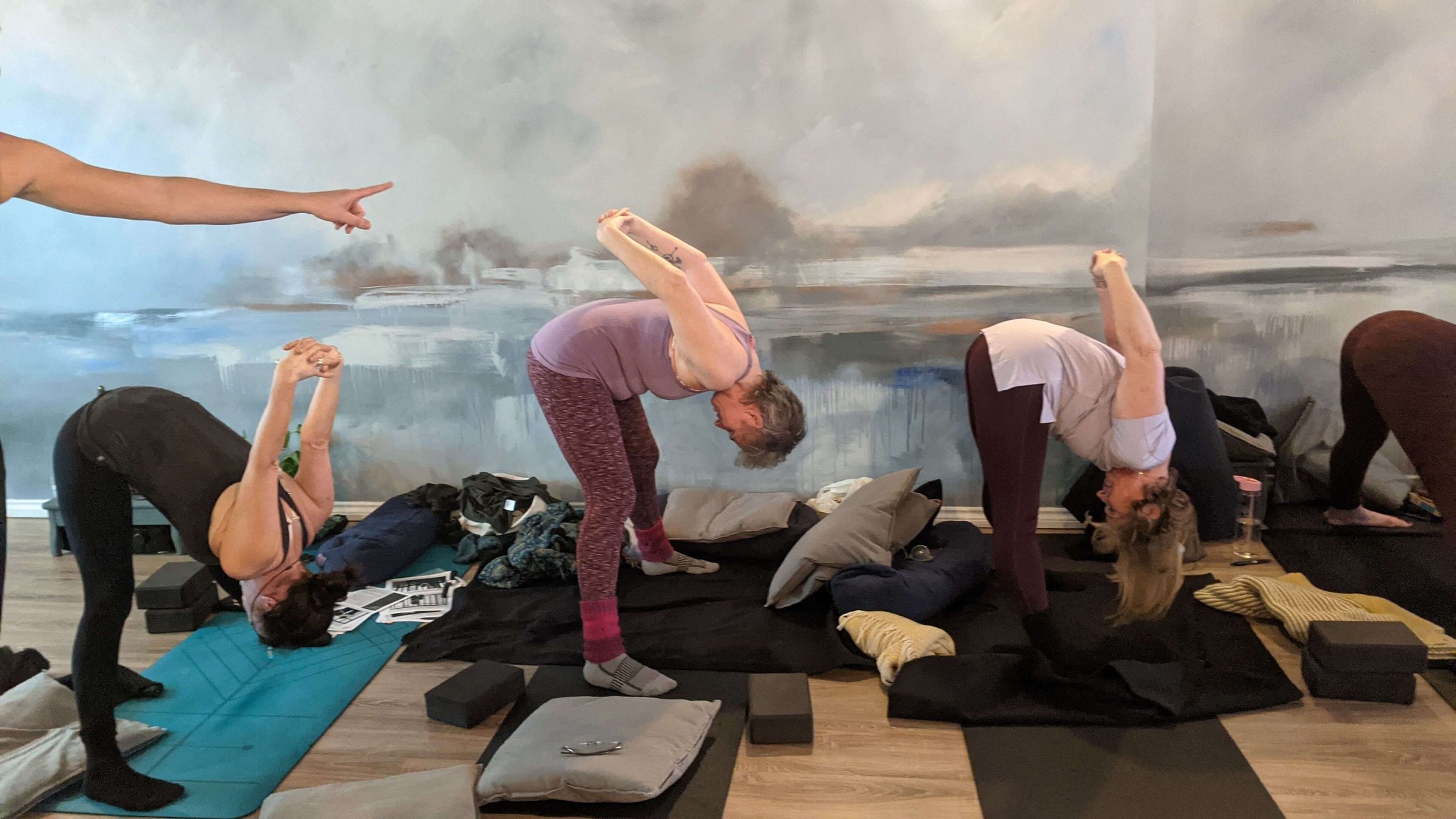
About Functional Yoga as Therapy
What Functional Yoga could only dream of,
Where Yoga Therapy failed.
What is Functional Yoga as Therapy?
Functional Yoga as Therapy is NOT:
It is not a cure or rehabilitation for a specific problem, but an approach to teaching all persons through feeling-the-present-moment-experience lens.
It is not restricted to any one segment of the population.
It is not restricted to teaching one to one, and can be taught in all group classes.
It is not a way to separate yoga teachers and yoga therapists into different categories.
Functional yoga as therapy is a person-centred, feeling-anchored use of yoga techniques to foster greater mind-body-soul awareness, somatic integration and radical self-empowerment.
It is a philosophy which sees yoga practice and teaching as the facilitation of a very individual experience.
It is a paving of the way to greater embodiment & healing, and experiencing of yoga as therapy.
With feeling over aesthetics as the lens, and present moment connection prioritised, our answers arise from within.
In order to "be well", we first have to "be".
You cannot heal what is causing imbalance if you don’t stay still long enough to find it, and open up the line of interoceptive inquiry to find the message at its often messy core.”
Grace Tempany, Founder of ISFYT
The Origins of Functional Yoga as Therapy
Functional Yoga as Therapy takes functional yoga foundations (Paul Grilley Method), aligns with the original definition of yoga therapy (Krishnamacharya), and uses them as foundations for a feeling-based model of yoga as therapy.
Yoga has always been therapeutic. Not only that, the origins of yoga as therapy are inherently individually-tailored: Teach what is appropriate to the individual (Krishnamacharya).
But somewhere along the way, the healing and feeling, the fitting the pose to the body - and not the other way around, fell to the wayside, as teaching en masse became standardised and in many cases, diluted.
What was a rule for one became a rule for all in the interests of 'safety', and yoga lost much of its capacity for healing with the rise of 'cookie-cutter' teacher training programmes which for the most part have done little to empower yoga teachers to know how to teach the bodies in front of them.
Teach the students you have, not the students you want.
One of the most commonly acknowledged benefits of yoga is its capacity to alter long-standing dysfunctional behaviour. But in order to change what is dysfunctional, or heal what needs healing, we must first come to stillness and engage in some self-inquiry to realise it. This is integral to the ISFYT philosophy of travelling the yinside first.
At ISFYT, we start with the yin practice as the most holistic access point; to the body, to the mind, and to the soul. Yin is the still point where insight can be gleaned. Yin is the practice of acceptance and self-knowledge, and the place where we begin to get to know the person behind the practitioner, the true identity of the teacher.
First we practise being, and from a more integrated and embodied place, we tailor our yang practices to our very individual uniqueness.


